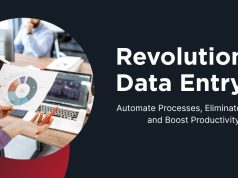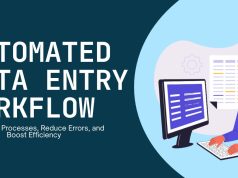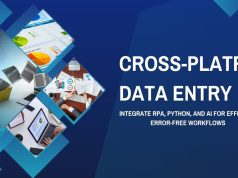In an age where speed and accuracy define business success, manual data entry from paper forms, invoices, receipts, and contracts remains a costly bottleneck. Human errors, slow turnaround, and high labor costs plague organizations trying to bridge the gap between physical documents and digital records. Fortunately, modern AI-powered Optical Character Recognition (OCR) solutions enable you to automate paper-based data entry end-to-end, transforming stacks of hardcopy into structured, reliable data in seconds. This comprehensive guide explores the technology, benefits, implementation steps, and best practices you need to adopt AI OCR for seamless paper-to-digital workflows in 2025.
1. What Is AI-Powered OCR?
Optical Character Recognition (OCR) uses algorithms to detect and convert printed or handwritten text from images or scanned documents into machine-readable characters. Traditional OCR tools relied on fixed templates and basic pattern matching, leading to inconsistent results on varied layouts or fonts. AI-powered OCR introduces deep learning and computer vision models that adapt to different document types, languages, and handwriting styles. These systems pre-process images, segment text regions, and apply neural networks to recognize characters with human-like accuracy. The result is a flexible, scalable engine that turns any paper source into structured data without manual review at every step.

2. Key Benefits of Automating Paper-Based Data Entry
- Boosted Accuracy: AI OCR reduces typographical errors and inconsistencies common in manual entry, delivering up to 99% accuracy when properly configured.
- Faster Turnaround: Scan hundreds of pages in minutes and process thousands of data points in real time, accelerating reporting, billing, and decision-making.
- Cost Savings: Slash labor costs associated with repetitive tasks and rework due to human mistakes. Automating even a fraction of your document flow delivers significant ROI.
- Scalability: Handle variable workloads effortlessly—whether end-of-month reports or peak-season invoices—without hiring temporary staff.
- Audit Trail and Compliance: Maintain digital logs of original scans and recognized data for regulatory audits, reducing risk and ensuring data integrity.
3. How AI OCR Works Under the Hood
- Image Acquisition: Documents are scanned via high-resolution scanners or captured by mobile cameras. Quality settings (DPI, lighting) directly impact recognition accuracy.
- Pre-Processing: The system applies noise reduction, skew correction, and binarization to enhance text legibility and remove background artifacts.
- Layout Analysis: AI models detect text blocks, tables, checkboxes, and graphics. Advanced engines support multi-column, multi-language layouts without manual template setup.
- Character Recognition: Deep neural networks predict individual characters or words, using context-aware post-processing (language models) to correct likely errors.
- Data Export: Recognized data is structured into CSV, JSON, XML, or directly pushed into ERP, CRM, or database systems via API connectors.

4. Step-by-Step Implementation Guide
4.1 Assess Your Document Workflows
Map out current paper-based processes: invoice processing, purchase orders, contracts, survey forms, receipts, and more. Identify volume, format diversity, and critical data fields. Establish accuracy targets (e.g., 98%+), throughput requirements (pages/hour), and compliance needs (audit logs, GDPR).
4.2 Choose the Right AI OCR Solution
Evaluate vendors on these criteria:
- Accuracy Benchmarks: Verify performance on your document samples or request a proof of concept.
- Integration Options: Look for REST APIs, SDKs, low-code connectors, and pre-built integrations with popular platforms (e.g., SharePoint, SAP, Salesforce).
- Deployment Model: Cloud, on-premises, or hybrid. Consider data sensitivity, latency, and compliance constraints.
- Language & Handwriting Support: Ensure the engine can handle the languages and free-form text your organization uses.
- Custom Training & Templates: Ability to fine-tune models on your specific forms, logos, or invoice layouts for higher precision.
4.3 Configure and Train Your Model
Gather a representative sample of documents (50–200 pages) and label the key fields (vendor name, date, amount, invoice number). Use the vendor’s annotation tool or open-source labeling platforms. Train the OCR model on this dataset to improve recognition accuracy for your unique layouts.
4.4 Integrate with Downstream Systems
Use API endpoints or middleware (e.g., Zapier, Microsoft Power Automate, UiPath) to route extracted data into your ERP, accounting software, or custom database. Establish error-handling routines: flag low-confidence fields for manual review and automate exception workflows to speed up corrections.
4.5 Pilot, Validate, and Scale
Start with a pilot on a small, controlled batch of documents. Compare OCR output to manually entered data to measure precision and recall. Tweak image pre-processing, retrain on misclassified samples, and adjust confidence thresholds. Once you achieve goals, roll out automation to the entire organization, tracking KPIs like cost per page, processing time, and error rates.
5. Top AI OCR Tools for Paper-Based Data Entry Automation
- ABBYY FlexiCapture: Industry leader in document capture with template-free AI, robust multi-language support, and enterprise-grade scalability.
- Google Cloud Vision API: Easy-to-use REST API, integrates with GCP services, strong handwriting and multi-language recognition.
- Azure Form Recognizer: Microsoft’s AI service for form and invoice processing, customizable training, and built-in connectors to Power Platform.
- UiPath Document Understanding: RPA-centric platform combining OCR, machine learning, and rules-based extraction, ideal for end-to-end automation workflows.
- Hyperscience: Focused on handprint and cursive, with adaptive learning and minimal setup for finance and healthcare documents.

6. Best Practices for Reliable Results
- Optimize Scanning Quality: Use consistent DPI (300+), uniform lighting, and paper orientation to minimize skew and shadows.
- Leverage Validation Rules: Implement checks (e.g., date ranges, numeric formats, mandatory fields) to catch anomalies automatically.
- Iterate on Training Data: Continuously feed misreads back to the training pipeline to improve accuracy over time.
- Establish Governance: Define roles, responsibilities, and audit trails to manage exceptions, model updates, and compliance reviews.
- Measure Continuous Improvement: Track KPIs—pages processed per hour, cost per document, and accuracy rates—to demonstrate ROI and guide optimizations.
7. Overcoming Common Challenges
Even the best OCR system can struggle with low-quality scans, handwritten notes, or complex table layouts. To mitigate these issues:
- Pre-sort and tag documents by type to apply specialized processing pipelines.
- Incorporate human-in-the-loop reviews for low-confidence cases, focusing resources where they matter most.
- Use hybrid approaches—combine rule-based templates and AI models—to handle outliers without sacrificing throughput.
- Regularly recalibrate scanning hardware and retrain models when document designs or form layouts change.
8. Future Trends in Data Entry Automation
As AI research advances, expect further innovations in natural language understanding, zero-shot OCR (recognizing unseen fonts or layouts), and context-aware extraction that interprets meaning across multi-page documents. Integration with conversational AI will enable voice-driven document uploads and real-time clarifications, while blockchain-based audit trails will bolster data integrity for regulated industries.
Conclusion
Automating paper-based data entry with AI-powered OCR is no longer a futuristic concept—it’s a proven strategy to reduce costs, eliminate errors, and accelerate business processes. By assessing your workflows, selecting the right technology, training your models, and integrating seamlessly with downstream systems, you can convert legacy paper archives and incoming documents into actionable data at unprecedented scale. Embrace this transformation in 2025 to stay competitive, compliant, and customer-focused in the digital economy.
Ready to revolutionize your paper-based workflows? Request a demo of a leading AI OCR platform today and see immediate gains in accuracy, speed, and efficiency.










